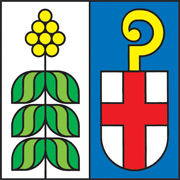|
|
|
|
La storia del Fondo Haller di Mezzovico-Vira
Nelle volontà testamentarie, la Haller aveva donato la sua collezione e la casa-atelier alla città di Zurigo, sua città d’adozione, dove aveva installato il suo primo atelier dal 1939 ca. agli inizi degli anni ‘60. Il Municipio di Mezzovico-Vira, presieduto da Walter Canepa, s’interessò subito all’eventuale acquisto di tutta la collezione, contattando la città sulla Limmat. Per motivi di politica culturale interna, il Muncipio di Zurigo rinuncia al lascito e successivamente Egas Luis Ferrera, unico erede della pittrice, è disposto a vendere l’intera opera artistica. Il 13 luglio 1992 il Consiglio comunale di Mezzovico–Vira concede il credito per l’acquisto della collezione e accetta la donazione della casa-atelier. Da allora, come auspicato anche dall’erede, il Municipio si è moralmente impegnato a valorizzare e divulgare l’opera artistica della Pittrice Vera Haller. Come primo passo, nel 1995 promuove un interessante studio confluito nel catalogo Vera Haller Pittrice curato da Federica Branca-Masa e Luca Patocchi, che illustra 120 opere selezionate tra le 330 che costituiscono l’insieme dell’opera pittorica di proprietà del Comune di Mezzovico-Vira. Dal 2025 Vera Haller, è inserita nell'archivio dell'Associazione Archivi Riuniti Donne Ticino (AARDT) con un apposita sezione e biografia curata dalla storica dell'arte Louise Dalmas. Vi invitiamo quindi volentieri a consultare la biografia inserita per conoscere meglio questa poliedrica artista che ha dato lustro al nostro Comune. Link alla biografia: biografia Vera Haller AARDT |
|
Die Geschichte des Nachlasses Haller von Mezzovico-Vira In ihrem Testament vermachte Vera Haller ihr Gesamtwerk und das Haus mit Atelier ihrer Wahlstadt Stadt Zürich, in der sie von ungefähr 1939 bis Anfang der Sechziger Jahre ihr erstes Atelier hatte. Die Gemeinde Mezzovico-Vira, unter dem Vorsitz von Walter Canepa, interessierte sich von Anfang für den Ankauf der ganzen Sammlung und trat mit der Stadt an der Limmat in Verbindung. Aus internen kulturpolitischen Gründen verzichtete die Stadt Zürich auf die Schenkung. Der einzige Erbe der Malerin, Egas Luis Ferrera, war bereit, Vera Hallers Gesamtwerk zu verkaufen. Am 13. Juli 1992 bewilligte der Gemeindrat von Mezzovico-Vira den Kredit für den Ankauf der Sammlung und nahm die Schenkung des Hauses mit dem Atelier an. Im Sinne des Erben verpflichtete sich die Gemeinde moralisch, das Werk der Malerin Vera Haller zu pflegen und bekannt zu machen. Als ersten Schritt beauftragte sie 1995 Federica Branca-Masa und Luca Patocchi mit einer interessanten Studie, die in den Katalog Vera Haller Pittrice einfloss. Darin sind 120 ausgewählte Werke aus den insgesamt 330 Arbeiten des Gesamtwerks enthalten, das sich im Besitze der Gemeinde Mezzovico-Vira befindet. Seit 2025 Vera Haller ist im "archivio dell'Associazione Archivi Riuniti Donne Ticino (AARDT)" eingefügt Dank an der Kunsthistorikerin Louise Dalmas. Link zur Biografie im AARDT: biografia Vera Haller AARDT |
The history of the Haller Foundation in Mezzovico-Vira In her letter of wishes Vera Haller donated both her collection and house, where she first set up her studio in 1939 and which she occupied until the beginning of the 60s, to her adopted city of Zurich. The town council of Mezzovico-Vira, presided over by Walter Canepa, was immediately interested in the possible acquisition of the whole collection and contacted the city on the Limmat. Zurich city council’s internal politics resulted in a rejection of the legacy, following which Egas Luis Ferrera, the painter’s sole heir, was inclined to sell the entire collection. On 13 July 1992 Mezzovico-Vira’s town council approved the budget for purchasing the collection and accepted the donation of the house/studio. From then on, just as her heir hoped, the town council took on the moral responsibility to ensure that Vera Haller’s artistic output became appreciated and widely known. As a first step there was an interesting study in 1995, culminating in the catalogue Vera Haller, Painter, edited by Federica Branca-Masa and Luca Patocchi with illustrations of 120 works selected from the 330 which constitute the total owned by the town council of Mezzovico-Vira. Since 2025 Vera Haller is now in "archivio dell'Associazione Archivi Riuniti Donne Ticino (AARDT) thanks to art historian Louise Dalmas.
Link to the biography on AARDT: biografia Vera Haller AARDT |
|
Con il sostegno di Municipio Mezzovico-Vira 
| Banca Raiffeisen del Vedeggio 
|
|
|
|
|